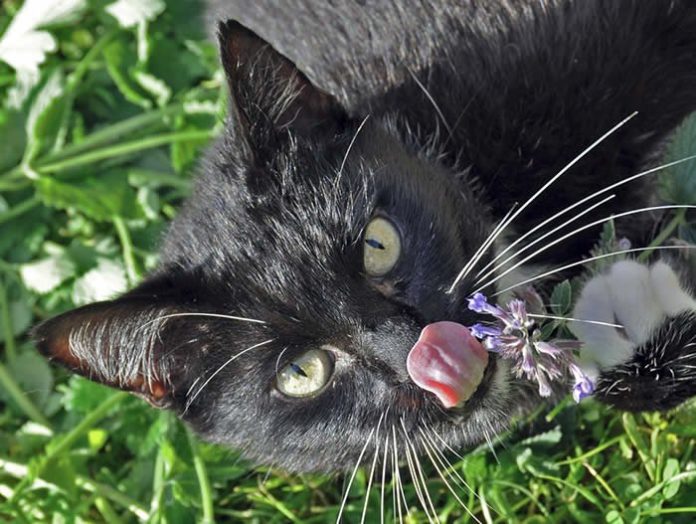HHelene | Deposit Photos

Catnip, technically Nepeta cataria, is a member of the mint family with a reputation for attracting cats. It is a fast-growing, tall plant with heart-shaped leaves and blossoms that are white, lavender, or pink. Most cats love it! Cats in the wild, even big cats, often seek out patches of catnip and return repeatedly.
Get Quality Catnip
Not all catnip is the same, however. When choosing catnip, look for mostly leaves and flowers—the most potent parts—with few stems. And quality catnip isn’t cheap, selling for $3 to $4 an ounce.
Dried catnip products should only contain catnip—check the ingredients label for any fillers or other ingredients. It may take some experimentation to determine how your cat reacts to different brands. If you find one product he really likes, write down the manufacturer name. Hint: Prefilled catnip toys can be difficult to evaluate, but sometimes use low-quality catnip.
The quality of the plant is affected by the soil and climate where it is grown. Pesticides can linger and pose a risk to your cat. For this reason, you should never give catnip that you find outside to your cat unless you are certain that the area was not sprayed.
You can grow your own catnip using commercial kits. Give the leaves and blossoms to your cat fresh, or dry them by hanging the plant upside down until it crumbles when touched.
Catnip left out in the air loses its potency over time (anecdotal reports say in about six months). Catnip in a sealed container, however, can still make your cat’s day years later. You can also freeze it to prolong its shelf life.
Natural High
Catnip contains the volatile oil nepetalactone. When a cat inhales this chemical, it is processed by the vomeronasal organ in his nasal passages, resulting in the stimulation of sensory neurons that send signals to the cat’s brain. The result is a sense of euphoria or mild hallucination that lasts 10 to 15 minutes. During this time, the cat may purr, roll, rub, drool, run around, and/or sniff, lick, or eat the catnip. Cats seem to enjoy these sensations, and it’s fun for us to watch too!
Catnip is not addictive, and a study that evaluated long-term use by cats showed no ill effects. In rare cases, cats may show aggressive behaviors after being exposed to catnip, but that usually stops once the cat is no longer under the influence. After a cat’s response to catnip has worn off, it will usually take an hour or two before he will react to it again.




